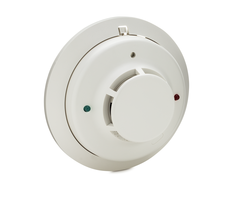Wired Peripheral Sensors





A wired peripheral sensor will connect with a security panel using a hardwired connection. If the wired sensor is connecting with a hardwired panel, then it will be wired directly to the panel itself. If the device is being used with a wireless system, then a wired to wireless converter, such as the Honeywell 5800C2W will usually be needed. Although wired peripheral sensors can be more challenging to install than wireless sensors, most end users can complete the process on their own, unless some intricate wiring through walls is needed.
When a hardwired peripheral sensor is set up with a wired system, it will interface with a hardwired zone. These zones can usually be named in such a way that the user can easily identify the device that is affected. For example, if the system alerts the user that there is a fault on the back door, then they will know that their back door has been opened and that the door contact has been triggered. These devices can also be set up so that they will immediately send a signal to the central monitoring station upon being activated. This can be especially useful for hardwired life-safety devices, such as fire detectors and carbon monoxide detectors.
In most cases, a user will not need to replace their wired peripheral sensors if they decide to upgrade to a newer, wireless security system. The user will simply use a wired to wireless converter in order to integrate their old devices with their new system. This can be very convenient way to make a huge upgrade to your home security set up. Most users find that the newer wireless security systems are easier to program and that they offer a better selection of features and functions. Keeping one’s existing hardwired sensors can also save a user a large amount of money, since replacing several wired sensors with wireless ones can be very expensive.
One advantage to hardwired peripheral sensors is that they require somewhat less maintenance than wireless sensors. While their initial installation is usually more difficult, they typically feed off the power of the panel, and they will require very little in terms of regular maintenance. As long as they are not tampered with, they should effectively perform their job for many years to come. You also will not have to worry as much with signal range, as the connections will be made directly through a wire. If you are using a wireless converter with a wireless system, then the converter will need to be within range of the panel for the hardwired peripheral sensors to operate. As long as this is the case, you will have no problems using your hardwired sensors.
Hardwired peripheral sensors come in all sorts of different types, each providing a different function in protecting the home or business. Most can be classified into one of three types of devices, those being security devices, environmental devices and life-safety devices. Security sensors will alert a user to any unwanted intrusion that may occur, such as a door being opened or a window being broken. An environmental sensor will alert a user to external factors that can damage a building, such as dangerously low temperatures that could cause the pipes to freeze. Finally, a life-safety sensor will alert a user to the presence of a life-threatening situation, such as a fire or an outbreak of carbon monoxide.







